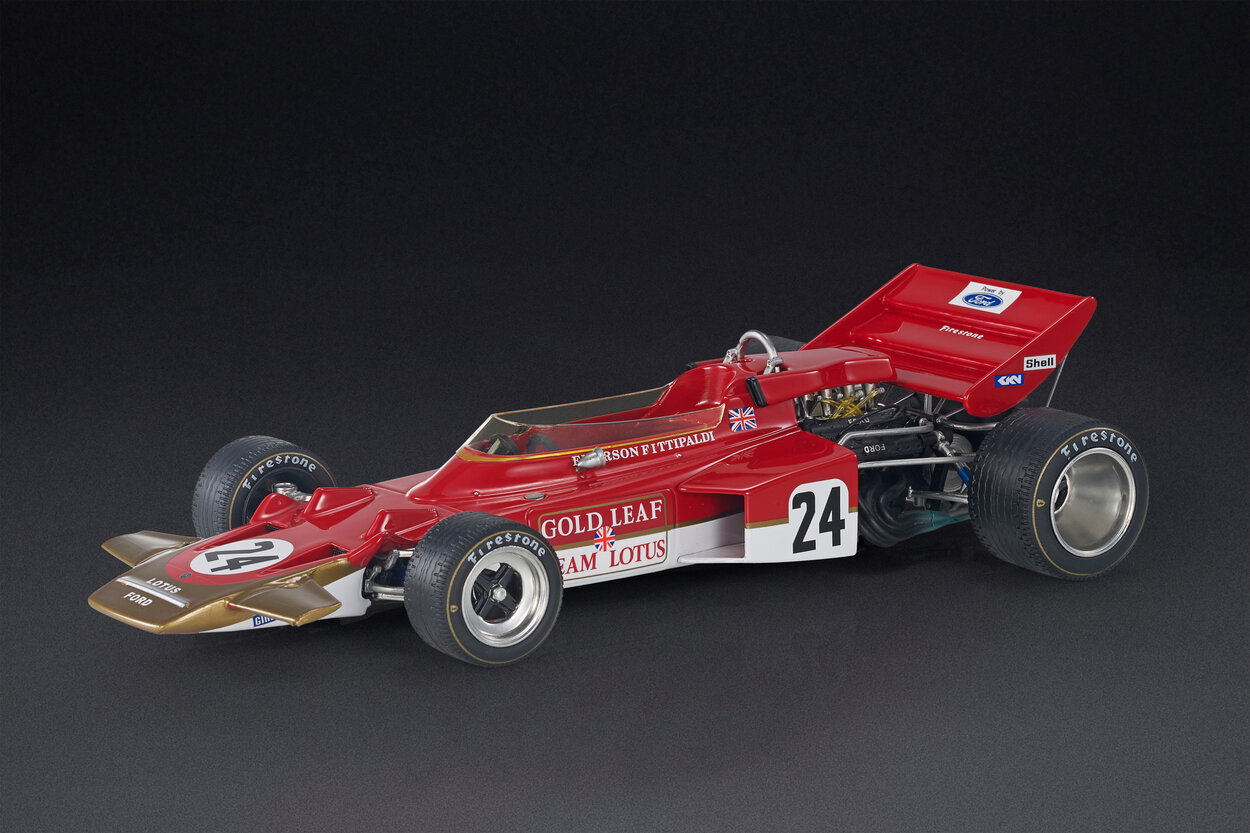Lotus 72C
The Lotus 72 is the longest-serving Formula 1 car built by Lotus. Through the various versions that succeeded each other over the years, it was used from 1970 until 1976. The version C is the car that won the 1970 World Championship.
Designed as always by the team consisting of Colin Chapman and his chief engineer Maurice Philippe, the 72 introduces a series of innovations that were absolute novelties for Formula 1 cars of the time. Among these are brakes mounted internally, radiators removed from the nose for the first time and relocated to the sides, and an air intake for the engine positioned above the driver’s helmet, a solution that would be adopted by all other constructors and would characterize the first half of the 1970s.

Drivers:
Jochen Rindt: Austrian driver Jochen Rindt debuts the Lotus 72 on the Jarama circuit. However, his first experience with the new car doesn’t satisfy him. He says the car lacks development. When he takes hold of it again a month and a half later, the 72 A/B, and especially the C version, is a profoundly different and immediately winning car. Rindt wins four consecutive races at Zandvoort, Clermont-Ferrand, Brands Hatch, and Hockenheim, accumulating the points that will allow him to become world champion, despite meeting his death at Monza, behind the wheel of the 72C.
John Miles: In his last season in Formula 1, British driver John Miles participates in six races with the 72C, with four retirements, a seventh, and an eighth-place finish.
Emerson Fittipaldi: In only his fourth career race and his first driving the Lotus 72C, the then twenty-three-year-old Brazilian driver secures his first Formula 1 victory at the United States Grand Prix at Watkins Glen.
Our model cars:

As had happened in the past with other cars designed by Chapman, the 72 model has a unique body shape for the time, a kind of lowered wedge that significantly improves aerodynamics and makes it much faster than the model it replaced. Like the model 49, the engine, the famous 8-cylinder Ford-Cosworth, is load bearing.
The development of the car was long hindered by the suboptimal performance of the new suspension geometry, another innovative solution developed by Chapman. The poor performance of the suspension would affect the car’s handling for a long time, which is why, after debuting it at the Spanish Grand Prix in 1970, Jochen Rindt preferred to drive the ‘old’ Lotus 49C for two races.

